Schedule
Wheat Crop Schedule
| Product Name | Fertilizers | |||||
|---|---|---|---|---|---|---|
| Poornima Kit | NPK Caps | Humigrow Nano Powder | Alp | Sonha-Bihan | ||
| Humic Acid | Chelated Multi-micronutrient |
PGP/PGR | ||||
| Land Reparation | week -2 | |||||
| Soil Treatment | week -1 | |||||
| Before Seed Sowing | week 0 | |||||
| Germination | week 1 | |||||
| Fruiting stage & Vegetative Flowering |
week 2 | 1 Kit | ||||
| week 3 | ||||||
| week 4 | ||||||
| week 5 | ||||||
| week 6 | 2 Caps | 120 gm | ||||
| week 7 | 250gm | 250gm | ||||
| week 8 | ||||||
| week 9 | 1 Kit | |||||
| week 10 | ||||||
| week 11 | ||||||
| week 12 | ||||||
| Grain Formation Flowering/ |
week 13 | |||||
| week 14 | ||||||
| week 15 | ||||||
| week 16 | ||||||
| Harvesting | ||||||
| Total Quantity | 1 Kit | 4 Caps | 240gm | 250gm | 250gm | |
| Broadcast | |
| Top Dressing | |
| Basal Dressing | |
| Soil Application | |
| Spray | |
| * | Optional |
NOTE: For the first year donot immidietaly substitute 100% chemical fertilizer with the SIESTO GREEN products, as the soil is used to chemical fertilizer, it may affect the output. So the best way to substitute is by reducing 50% of chemical input in the first year, 25% the following 2nd year, & then another 10% by the 3rd year. After the 3rd year use synthetic fertilizer / inorganic fertilizer if their is a requirement depending on the soil health.
CROP SCHEDULE FOR WHEAT
| Sr. No. | Treatment / Application | Product | Dose /Acre | APPLICATION | Management |
|---|---|---|---|---|---|
| 1 | Vegetative – Dissolve in 20 to 200 ltr. of water as required for 1 acre of land and apply through Drip Irrigation or drench. | POORNIMA KIT | 1 KIT | Apply it in week 1 & 8 | It is a balanced form of nutrients that includes NPK, Zinc, Cropforce NP, Humigrow NP, and Mycorrhiza NP |
| 2 | Vegetative – Mix all with the required amount of water and apply through drip irrigation, flood irrigation, or drenching as per farmer’s availability. | NPK + Humigrow | 2Caps + 120gm | Apply it in week 4 and 12 | It is a balanced form of Nutrition that includes NPK. |
| 3 | Flowering – Mix both in 20 – 200 liters of water as per requirement and spray it in the plants. | ALP + Sonhabihan | 250gm + 250gm/200 lit. of water | Apply it in the week 6 | It is a Micronutrient and PGP that helps in Growth, Fruit set, and the quality of the produce. |
| 4 | Vegetative and Flowering/ Fruiting – Mix all with the required amount of water and apply through foliar spray or drenching as per infestation of insect. | Amavasya kit | 2 kits | Apply it in week 7 and 10 | It is a balanced form of insecticides. Which include Traps, lifeline ,Bt,Acarida and Meta capsules. |
| 5 | Soil Treatment – Dissolve in 20lit. to 200lit. of water as per requirement for 1 acre of land and apply through drip irrigation or drench. | IBP KIT | 1 kit | Apply it before sowing and in week 5 | It prevents soil-born diseases and nematodes. Apply as per the soil health and soil-born diseases. |
PEST ATTACKS, BACTERIAL, OR FUNGAL MANAGEMENT
| PEST / BACTERIAL / FUNGAL | IDENTIFICATION IN CROP | SYMPTOMS | SUGGESTED PRODUCT |
|---|---|---|---|
| Seedling Blight | 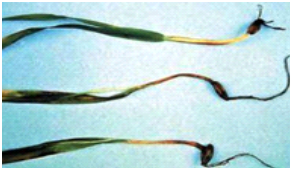 | This symptom is seen when ears become infected during the early flowering stages. Later infections may result in infection of the grain but without obvious bleaching of the ears. | Indofa + Bacillus |
| Powdery Mildew | 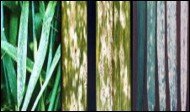 | Powdery mildew can easily be diagnosed by the white, powdery patches that form on the upper surface of leaves and stem | Indofa + Bacillus |
| Loose Smut | 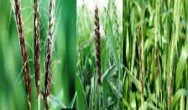 | It is a seed-borne disease; infection occurs during Loose Smut flowering through wind-borne spores. | Indofa + Bacillus |
| Brown Rust | 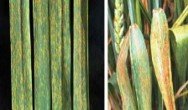 | The most common site for symptoms is on upper leaf blades, however, sheaths, glumes, and awns may occasionally become infected and exhibit symptoms. | Indofa + Bacillus |
| Stripe rust / Yellow rust | 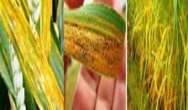 | Mainly occur on leaves than the leaf sheaths and stem. Bright yellow pustules (Uredia) appear on leaves at an early stage of crop and pustules are arranged in linear rows as stripes. | Indofa + Bacillus |
| Black rust | 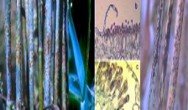 | Symptoms are produced on almost all aerial parts of the wheat plant but are most common on a stem, leaf sheaths, and upper and lower leaf surfaces. | Indofa + Bacillus |
| Flag Smut |  | Symptoms can be seen on the stem and leaves from the late seedling stage to maturity. | Indofa + Bacillus |
| Hill Bunt or Stinking Smut |  | The fungus attacks seedlings 8-10 days old and becomes systemic and grows along the tip of the shoot. | Indofa + Bacillus |
| Leaf Blight | 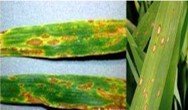 | Reddish-brown oval spots appear on young seedlings with bright yellow margins. In severe cases, several spots coalesce to cause the drying of leaves. | Bacillus + Indofa |
| Helminthosporium leaf blotch (Spot Blotch) |  | Lesions caused by this disease are elongated to oval in shape and are generally a dark brown color. Avoid evening or late afternoon watering. | Indofa + Bacillus |
| Head scab/ Fusarium leaf blotch (Snow Mold) | 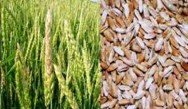 | The blotching caused by this organism becomes evident on leaves at about the late-joint to early-boot growth stage. | Indofa + Bacillus |
| Wilt | 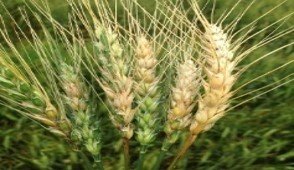 | It appears first on older leaves and includes yellowing and wilting. Severely infected plants wilt permanently and prematurely lose leaves. | Indofa + Bacillus |
| Root & fruit Rot | 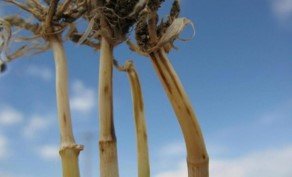 | Brown areas at the base of the stem or roots. | Indofa + Bacillus |
| Aphids |  | • Curled & deformed leaves • Stunted growth | Lifeline + Traps + Meta |
| Termites |  | Wilting, and often lodging, of young or older plants. The roots and the base of the stem are hollowed out. | Traps / Metarhizium |
NUTRITION DEFICIENCY IN PADDY CROP
| NUTRITION | SYMPTOMS | Description | SUGGESTED PRODUCT |
|---|---|---|---|
| Nitrogen Deficiency | 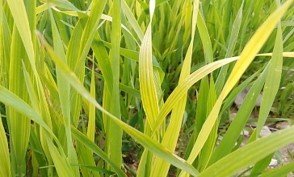 | Discoloration of leaves – pale green, light red petioles and veins. Stunted leaf Growth | Azoss Caps |
| Phosphorus Deficiency |  | Purple leaves – start from margins. | PSB Grow |
| Zinc Deficiency | 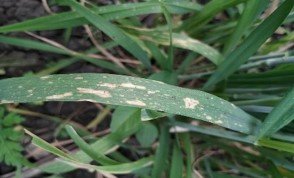 | Yellowing of leaves, starting from the margin. | ZSB caps |
| Boron Deficiency |  | Yellowing & thickening of leaves. | Alp |
| Iron Deficiency |  | Yellowing of leaves starts from the margins, leaf veins stay green. | Alp |
| Sulfur Deficiency | 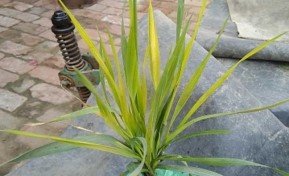 | Discoloration of leaves: pale green – Yellowish green – yellow. Reduced leaf size. | Sulfur caps |
KEY FARMING POINTS
KEY FARMING POINTS
- SOIL TYPE = Clay loam or loam texture, good structure, and moderate water-holding capacity.
- SOIL PH = 5.
- CLIMATE / TEMPERATURE = 20˚C to 25˚C
- SEASON OF PLANTING = Rabi season.
- MANURING & FERTILIZATION = Fertilizer requirements depend on the fertility or quality of the soil.
- WATER MANAGEMENT = A per-farmer practice.
- Crop Cycle = On average medium maturing varieties can be harvested in 120 days after sowing.
- YIELD = 9 – 12 quintals/ acre.
NOTE:
- Seed Treatment kit is optional.
- Bio-pesticides or Bio-fungicides can be applied on a preventive dosage or when any pest, fungal or bacterial diseases are identified.
- Recommended dosage on this crop schedule can vary depending on soil health, environmental conditions, and pest attacks.
- Add available forms of Phosphorus and Potash depending on the crop and crop varieties before every Transplantation.
PRECAUTIONS: –
- Biofertilizer is not a chemical fertilizer hence do not mix with agrochemicals.
- Do not expose to direct sunlight or heat.
- Use Bio-fertilizer before or after 3-4 days of use of chemical fertilizer.
- Please, clean the sprayer before the use of Bio-fertilizer or bio-pesticide.


